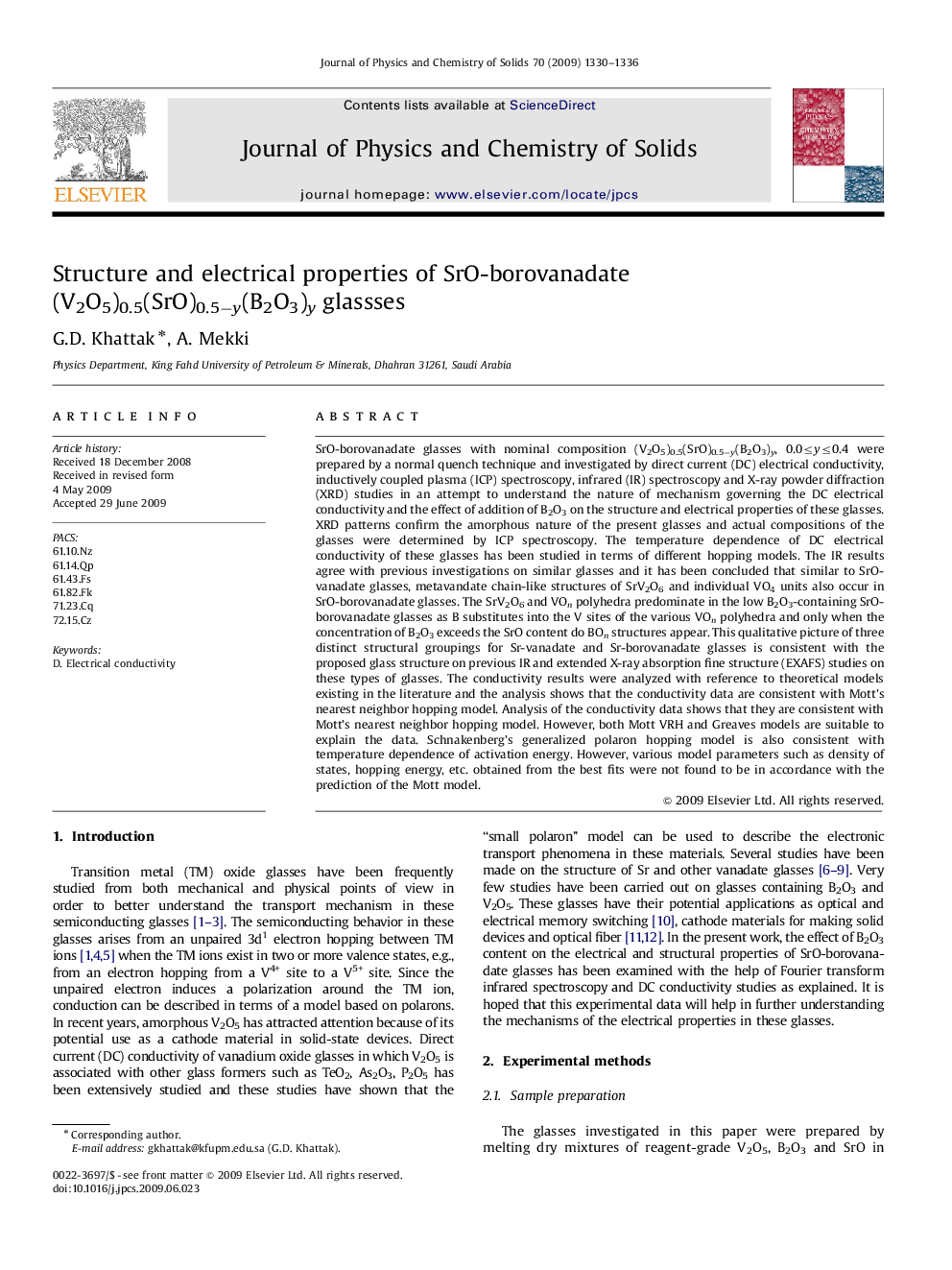| کد مقاله | کد نشریه | سال انتشار | مقاله انگلیسی | نسخه تمام متن |
|---|---|---|---|---|
| 1517495 | 1645414 | 2009 | 7 صفحه PDF | دانلود رایگان |

SrO-borovanadate glasses with nominal composition (V2O5)0.5(SrO)0.5−y(B2O3)y, 0.0≤y≤0.4 were prepared by a normal quench technique and investigated by direct current (DC) electrical conductivity, inductively coupled plasma (ICP) spectroscopy, infrared (IR) spectroscopy and X-ray powder diffraction (XRD) studies in an attempt to understand the nature of mechanism governing the DC electrical conductivity and the effect of addition of B2O3 on the structure and electrical properties of these glasses. XRD patterns confirm the amorphous nature of the present glasses and actual compositions of the glasses were determined by ICP spectroscopy. The temperature dependence of DC electrical conductivity of these glasses has been studied in terms of different hopping models. The IR results agree with previous investigations on similar glasses and it has been concluded that similar to SrO-vanadate glasses, metavandate chain-like structures of SrV2O6 and individual VO4 units also occur in SrO-borovanadate glasses. The SrV2O6 and VOn polyhedra predominate in the low B2O3-containing SrO-borovanadate glasses as B substitutes into the V sites of the various VOn polyhedra and only when the concentration of B2O3 exceeds the SrO content do BOn structures appear. This qualitative picture of three distinct structural groupings for Sr-vanadate and Sr-borovanadate glasses is consistent with the proposed glass structure on previous IR and extended X-ray absorption fine structure (EXAFS) studies on these types of glasses. The conductivity results were analyzed with reference to theoretical models existing in the literature and the analysis shows that the conductivity data are consistent with Mott's nearest neighbor hopping model. Analysis of the conductivity data shows that they are consistent with Mott's nearest neighbor hopping model. However, both Mott VRH and Greaves models are suitable to explain the data. Schnakenberg's generalized polaron hopping model is also consistent with temperature dependence of activation energy. However, various model parameters such as density of states, hopping energy, etc. obtained from the best fits were not found to be in accordance with the prediction of the Mott model.
Journal: Journal of Physics and Chemistry of Solids - Volume 70, Issue 10, October 2009, Pages 1330–1336